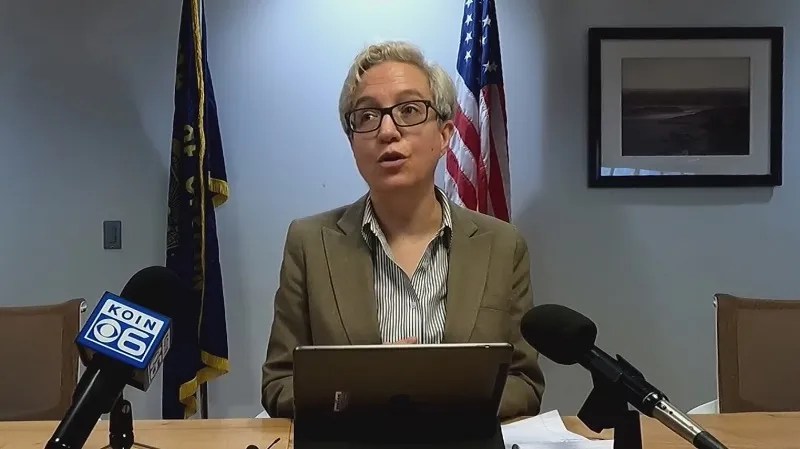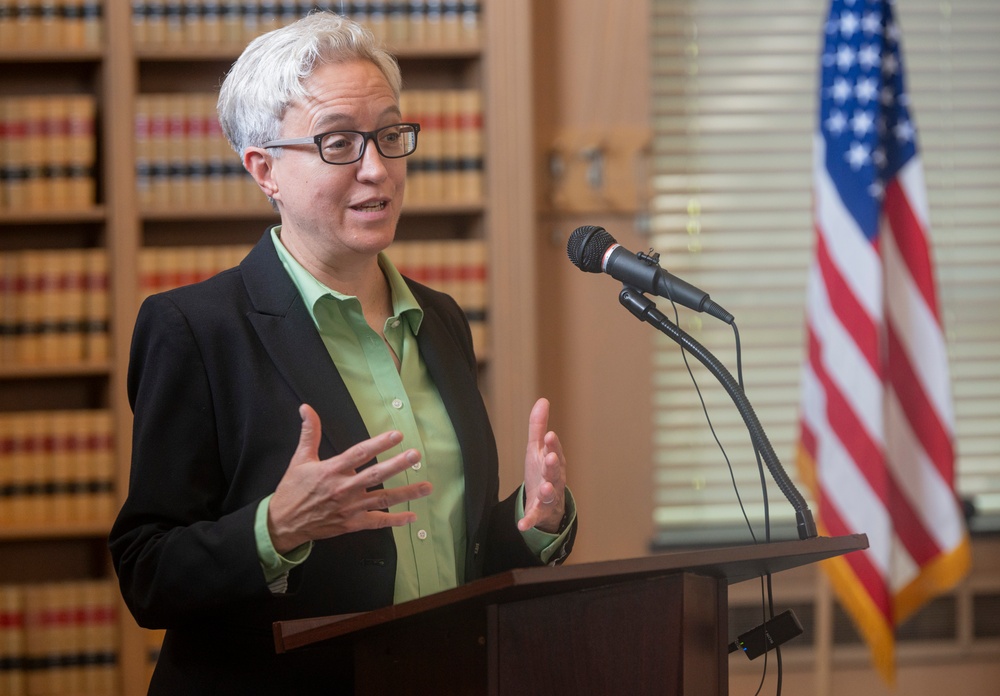It was supposed to be a political triumph for Donald Trump — a federal appeals court ruling that finally gave his administration the authority to deploy the National Guard into Oregon
, ending months of legal gridlock. But less than 24 hours later, Oregon’s Democratic governor, Tina Kotek, fired back with a series of bold and defiant actions that turned the victory into a standoff.
What followed wasn’t just a clash over troop movement. It was a confrontation between federal power and state sovereignty — and a test of how far one governor was willing to go to protect her state from what she called “unnecessary military interference.”
The Ruling That Started It All

The Ninth Circuit Court of Appeals’ decision came late Monday, clearing the Trump administration to deploy federalized National Guard forces into Portland “to maintain law and order.” It was seen as a
major legal win for Trump, whose team had argued that Oregon’s leadership had failed to control rising unrest and that federal intervention was justified.
But to Oregon officials, the ruling was an act of overreach — one that threatened both civil liberty and local control.
Governor Kotek responded swiftly, assembling her legal and public-safety teams before sunrise. By the next morning, her office had issued a firm and unmistakable statement:
“Oregon opposes any unnecessary military presence on our streets. We will use every legal and administrative tool available to protect our residents and our democracy.”
Within a single day, Kotek had turned Trump’s courtroom victory into a political firestorm.
Move #1: A Public Declaration of Resistance

Her first step was visibility — taking the fight from the courtroom to the public square.
Standing alongside Attorney General Dan Rayfield and Portland Mayor Keith Wilson, Kotek denounced the court’s ruling as “a dangerous precedent for federal intrusion into state governance.”
She accused the Trump administration of
“misusing military power for political optics”, saying that deploying troops without clear objectives “puts both citizens and soldiers at risk.”
Her office also claimed that National Guard members had not been briefed on their specific mission
, fueling public anxiety over the transparency and legality of the deployment.
“They were told to pack, not told why,” one state official said. “That’s not law enforcement — that’s theater.”
Move #2: Backing the Legal Counterattack
Even as she faced federal pressure, Kotek made her second move — reaffirming Oregon’s ongoing legal challenge.
She instructed the Attorney General’s office to
petition for an emergency review of the Ninth Circuit’s ruling, demanding that the court reconsider before any troops could be deployed.
The motion, filed late Tuesday evening, urged the judiciary to clarify whether the president’s authority to federalize state guard units applied during times of domestic protest rather than wartime.
“No governor should have to ask permission to protect her people from her own government,” Kotek said.
Legal experts described her maneuver as “a shot across the bow” — signaling Oregon’s readiness to fight the ruling all the way to the Supreme Court if necessary.
Move #3: The Administrative Wall

Kotek’s final move was quieter but just as strategic.
She signed an executive directive halting all logistical cooperation between the Oregon National Guard and federal agencies unless state officials received written justification for the mission.
This effectively slowed Trump’s deployment plan, forcing Washington to operate without the state’s logistical and command support.
The directive also ordered state agencies to provide emergency legal protection for any Guard members who objected to federal mobilization on constitutional grounds.
It was, in essence, a bureaucratic blockade — one that could delay the entire operation for weeks.
The Broader Battle
Behind the legal wrangling lies a deeper ideological divide.
For Trump and his allies, deploying the National Guard to Portland is a show of strength — proof that the federal government won’t tolerate unrest in liberal cities.
For Kotek and many Oregonians, it’s something else entirely: a warning shot to state independence.
“This isn’t about Portland,” said political analyst Marcia Lowe. “It’s about whether states have the right to reject federal muscle on their own streets.”
The clash has sparked fierce reactions nationwide. Supporters of the deployment argue that Trump is restoring law and order; critics warn that he’s testing the limits of presidential authority.
The Fallout
By midweek, the standoff had drawn national attention. Television crews flooded Salem. Protesters gathered outside the Capitol holding signs reading “No Troops on Our Streets” and “Oregon Belongs to Oregonians.”
Meanwhile, Washington remained defiant. A senior Trump advisor told reporters that “no governor can stand in the way of national security,” adding that Oregon’s resistance “will not change the president’s decision.”
But Kotek seemed unfazed. Her tone remained calm, her words deliberate.
“We will defend our people. Oregon will not be intimidated.”
A Fight That Defines More Than One State
What happens next could set a precedent for decades. If Oregon succeeds in blocking or delaying the deployment, it could embolden other states to challenge federal power in similar situations. If Trump prevails, it could expand the scope of presidential authority to federalize National Guards — even over state objections.
Either way, this isn’t just a courtroom dispute. It’s a battle for the balance of power in American democracy.
And as one political commentator put it, “In less than 24 hours, Tina Kotek turned Trump’s legal victory into a constitutional showdown.”




